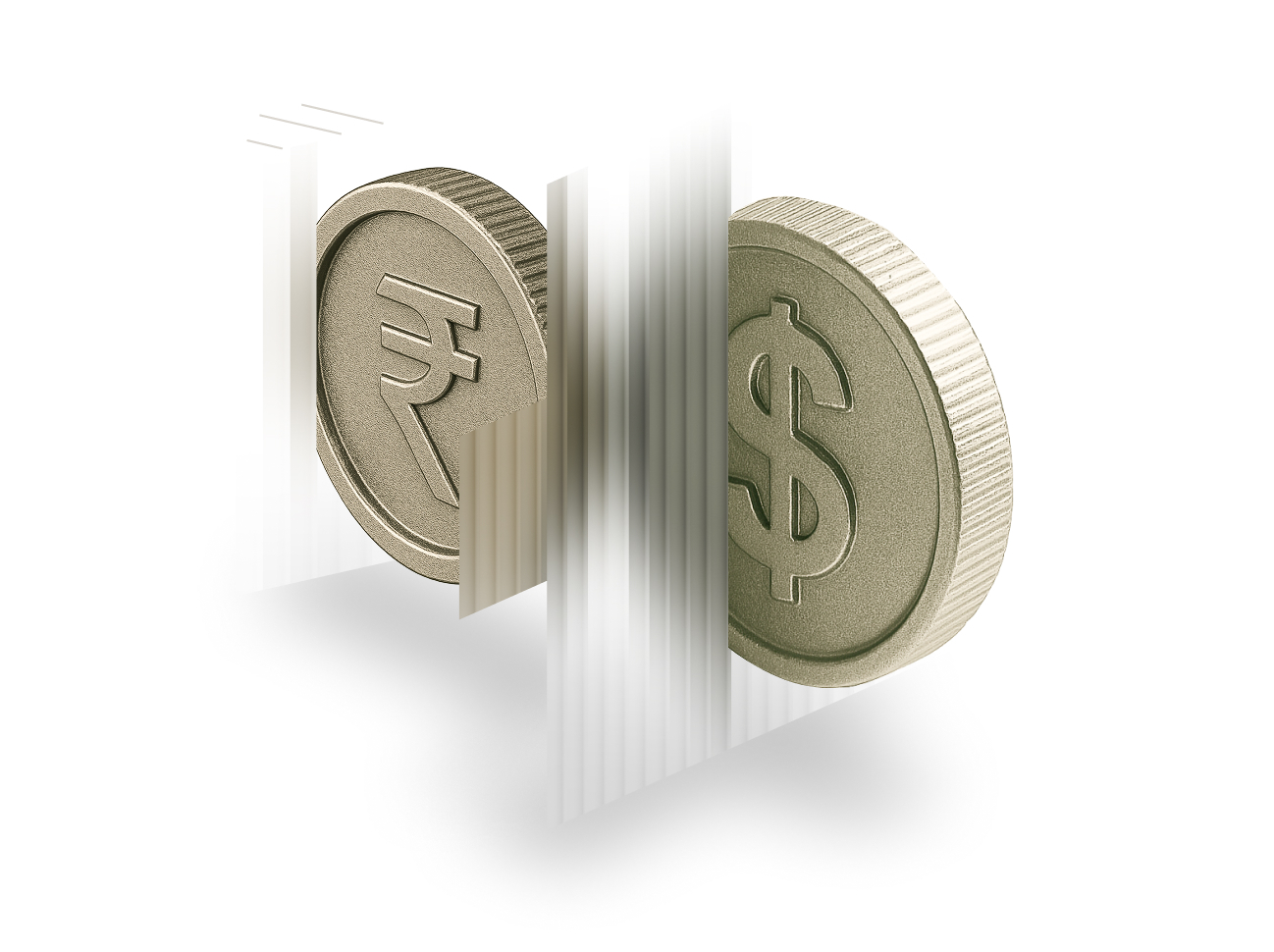The USD / INR currency pair represents the exchange rate between the US Dollar (USD) and the Indian Rupee (INR). Simply put, it tells you how many Indian rupees are needed to purchase one US dollar. This pair is one of the most actively watched in the foreign exchange market, especially for businesses, NRIs, policy-makers, and retail investors with exposure to either currency.
As India continues to assert itself on the global economic stage, movements in the rupee against the dollar have far-reaching implications for inflation, trade balances, corporate profitability, and foreign investment flows.
Historical Overview of USD/INR
India’s exchange rate regime has evolved considerably over the past decades:
- Pre-1991: India followed a fixed exchange rate system. The rupee was pegged to a basket of currencies, but primarily managed against the US dollar. Due to fiscal imbalances and external account pressures, the rupee was devalued twice in 1991 during a balance of payments crisis.
- Post-1991 Liberalization: A managed float system was adopted. Since then, USD/ INR has mostly been market-determined, though the RBI often intervenes to prevent excessive volatility.
Post-1991 Liberalization, the USD/ INR currency pair experienced a significant surge in liquidity, driven by increased participation from institutional players and a rise in speculative activity. Despite the Reserve Bank of India’s active interventions to maintain stability in the foreign exchange market, the pair has witnessed several periods of heightened volatility. These fluctuations have largely stemmed from global economic headwinds and persistent trade imbalances.
Key Factors That Influence USD/INR
1. Interest Rate Differentials
The interest rate gap between India and the US—particularly the federal funds rate versus RBI’s repo rate—plays a pivotal role. When US rates rise, capital tends to flow back to dollar-denominated assets, leading to INR depreciation. Conversely, attractive Indian yields can bolster the rupee. This was evident during the 2022-2023 Fed hiking cycle.
2. Current Account Deficit (CAD)
India runs a current account deficit, importing more than it exports—especially oil and electronics. India imports over 80% of its crude oil. Any spike in oil prices increases import bills, widens the current account deficit, and pushes the INR lower.A widening deficit increases demand for dollars, exerting pressure on INR. In FY2022, India’s current account deficit hit 2.7% of GDP, coinciding with INR nearing record lows.
3. RBI Intervention
India’s central bank actively intervenes in the forex market via dollar sales or purchases to curb undue volatility and maintain macroeconomic stability.
- RBI’s FX reserves act as a buffer.
- The central bank’s swap programs, forward guidance, and liquidity management tools also influence the pair.
4. Foreign Portfolio Investment (FPI) and FDI Flows
High FPI inflows (especially into Indian equities and bonds) support the rupee. However, any hint of global uncertainty or monetary tightening causes capital flight, weakening INR.
- Positive FPI Sentiment = INR strength
- Global Risk-Off = INR weakness
USD/INR in the Current Context (2024-2025)
As of early 2025, the rupee has been trading in a band between ₹84–₹86/USD, supported by:
- Moderating US inflation, which has led to expectations of a Fed rate cut cycle beginning mid-2025
- Improved forex reserves, now above $600 billion, providing the RBI ample firepower
- FPI Outflows, continuing since few years leading to increased demand pressure in USD
However, volatility cannot be ruled out due to global uncertainty, including tensions in the Red Sea, possible delays in Fed rate cuts, and any domestic fiscal slippages post-election.
Future Outlook for USD/INR
Structural depreciation of INR is likely to continue, but in a gradual and controlled fashion. Historically, INR has depreciated by ~3–4% annually against the dollar due to inflation differentials and productivity gaps. Sustained capital expenditure, energy imports, and infrastructure investments may continue to keep the demand for USD strong.
The USD/INR pair is shaped by a dynamic mix of domestic and global forces. While the long-term trend has been one of depreciation due to inflation differentials and current account gaps, active RBI management and improving Indian fundamentals are providing a cushion. Going forward, policy direction from the Fed, oil prices, and India’s macro strength post-2024 elections will determine the rupee’s path.
The USD/INR pair is much more than a forex quote—it’s a reflection of the complex interplay between global capital, monetary policy, and national resilience. For investors, a thoughtful approach to currency exposure can enhance returns, hedge risks, and open new opportunities.
At Zinc, we help parents comprehensively plan for their child’s global education, including building a dollar education corpus to hedge against INR depreciation. Our SEBI-registered investment advisors help estimate college costs and curate actively managed International ETF portfolios to help you financially secure your child’s global education dreams.
For more information, please visit our website or get in touch with us at +91 8422854460

Leave a Reply